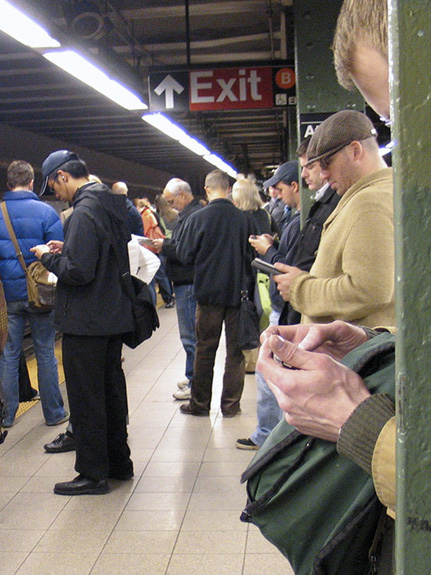Your Beatitudes, Eminences, Excellencies,
Most Reverend Bishops, Members of the Synod of Bishops of the UGCC,
Beloved Brothers in Priesthood, Venerable Monks and Nuns,
Very Honorable Representatives of the Ukrainian Government and the Diplomatic Corps,
Beloved in Christ Brothers and Sisters!
Glory to Jesus Christ!
“Before Your Cross we bow down in worship, O Master, and Your holy resurrection we glorify!”
With these words, the Church of Christ focuses today on the Precious and Life-Giving Cross. It is namely today, as we pass the halfway point of our Lenten journey, that this Life-Giving Tree is given to us that we may get strengthened by it, may find a source of strength therein as well as the courage to go on to Christ’s Resurrection in order to put this Sign of the Cross at the center of our lives.
St. Paul, in his Epistle to the Philippians, has left us a unique early Christian hymn, which the young, newly born through the Holy Spirit Church perhaps solemnly sang in its Liturgy. The Apostle of the Gentiles addresses us in this way:
“Have among yourselves the same attitude that is also yours in Christ Jesus, Who, though He was in the form of God, did not regard equality with God, something to be grasped. Rather, He emptied Himself, taking the form of a slave, coming in human likeness; and found human in appearance, He humbled Himself, becoming obedient to death, even death on a cross. Because of this, God greatly exalted Him and bestowed on Him the name that is above every name, that at the name of Jesus every knee should bend, of those in heaven and on earth and under the earth, and every tongue confess that Jesus Christ is Lord, to the glory of God the Father” (2:6-11).
In these words, the word about the Cross has a central meaning. On the one hand, we see here an icon of the earthly life of Jesus Christ, Who, having become man, was heading every day towards His death on the cross. The Cross is the moment of His greatest humiliation, extreme humility and divine descent. In the second part of this hymn, however, we see Christ, Who is glorified by the Father Himself. It is namely from the moment of the death on the Cross that we have the beginning of the ascent, glorification and triumphant discovery of His divine glory, which is the glory of the Father.
Every Christian, who, as a disciple of Christ, follows his Lord, must discover also in his personal life the effectiveness of His paschal mystery. There is only one door through which one can enter into the heavenly glory of the Resurrection – His Precious and Life-Giving Cross. Our vocation is to follow the Savior to the end, even unto death on the cross. The mystery of His Life-Giving Cross lies in the fact that this lowest degree of humility and obedient disgrace is exactly the place, from which the Heavenly Father proceeds to raise, lift up and exalt us by His divine glory, before which will bend a knee everything that is in heaven, on earth and under the earth.
“Before Your Cross, we bow down in worship, O Master, and Your holy resurrection we glorify!”
These words sound in a special way to us today – to us, the martyr Church, which, as a true heir of the faith of the apostles, sings them in this Patriarchal Cathedral of the Lord’s Resurrection! Is this not an eloquent sign of God for all of us, who today, when bowing down before the Precious and Life-Giving Cross of the Lord, are doing it in the Resurrection Cathedral?
Our Church in the twentieth century has walked with our Savior to the end – until the total destruction on its native land and a seeming death. However, this death of hundreds of thousands of our laity, priests, monks and nuns, led by our bishops, was the death on the cross and therefore the life-giving one! Our parents, grandparents and great-grandparents thus made known to us, their descendants, and through us – to free Ukraine – the strength and invincibility of the Precious and Life-Giving Cross of the Lord. In its disgrace, humiliation and descent, our Church has stood on this place – the place of resurrection, when the Heavenly Father glorifies it risen with His imperishable glory, before which every knee will bend, and every tongue, through the power of this Church’s testimony in the Holy Spirit, will confess that Jesus Christ is the Lord to the glory of God the Father.
“Before Your Cross, we bow down in worship, O Master, and Your holy resurrection we glorify!”
For me, the young Father and Head of the Ukrainian Greek Catholic Church, these words are the result of its past, the meaning of its present and the guidance for its future.
Today, we, the heirs of Volodymyr’s Baptism, feel the unity and continuity with our history and tradition, adopting the precious heritage of our great predecessors: Servant of God Metropolitan Andrei Sheptytskyi, Patriarch Josyf [Slipyi], Myroslav Ivan [Lubachivskyi] and Lubomyr [Husar]. Today, these men, through the warm hand of [His Beatitude] Lubomyr, bless us and make this treasure an alive, eloquent and illuminating one for a modern Ukrainian. “Holiness of the united People of God" is and will be the development strategy of our Church. She lives and acts as one body in the whole world as the Church on a universal scale, she is and will be the soul of the Ukrainian people in order to sanctify it, to open its heart to its brother and neighbor to preserve our nation as the people of God and lead it to salvation and life eternal.
Today we are experiencing the spring of our Church, which in her resurrection is beginning to get younger by the Holy Spirit and smile to the world with the light of Christ’s Gospel. It is about her, ancient and eternally new, the psalmist sings, saying: she “fills your days with good things and renews your youth as the eagle’s” (Ps. 102:5). Today, especially on this festive day, we realize that we are the renewed and rejuvenated Church. Hence, I want to make a special appeal to our, mostly still young clergy, religious, and to all of the Ukrainian youth! Today Christ calls us, the young, to take responsibility for His Church! Let us get preoccupied with her, let us put the Precious and Life-Giving Cross of our Savior in the center of our lives and He will sweeten it as Moses’ rod had sweetened the sour waters of Marah in the desert! Let us accept and courageously carry out our Christian vocation in the contemporary world, for together we can renew the face of our people and its nation.
“We praise Your passion, O Christ! Reveal also to us Your glorious resurrection!”
Amen.
Read more...



































































